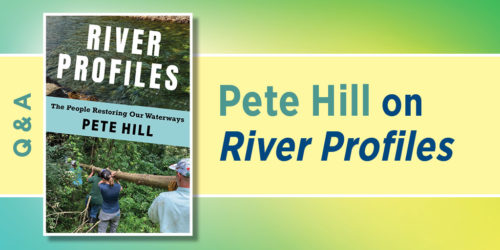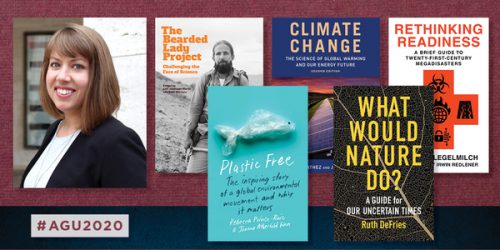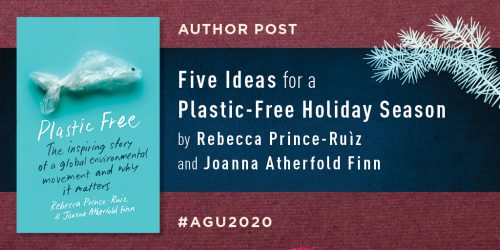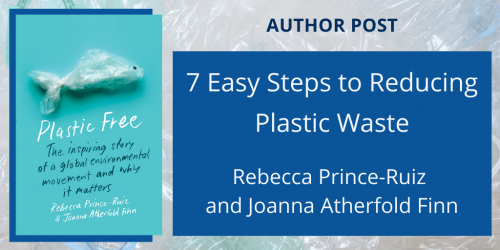Miranda Martin on Stepping UP for Climate Science
Understanding Paleoclimatology, Climate Models, and Urban Planning

I believe no publisher’s science list is complete without coverage of climate science. At Columbia University Press, we publish up-to-date, accessible books on the science of all aspects of Earth’s climate, from paleoclimatology—using science to understand ancient climate conditions—to models that simulate our climate today and into the future.
We also partner with the Earth Institute, now part of the Columbia Climate School, to publish the Earth Institute Sustainability Primers, a series of short, introductory books on key topics for students and nonexpert readers.
The climate crisis is a complex problem that affects all of us in myriad ways and requires a range of actions across governments, industries, and disciplines. As we also face alarming levels of mis- and disinformation in this area, I’m grateful to the many climate scientists I work with who choose to write books as a way to share their deep knowledge with general readers.
Let me highlight a few of our most recent books on climate science and the climate crisis:
Megalodons, Mermaids, and Climate Change
Answers to Your Ocean and Atmosphere Questions
Ellen Prager and Dave Jones
From dangerous marine life, coral reefs, and the deep sea to lightning, hurricanes, weather forecasting, the sun, and climate change, Megalodons, Mermaids, and Climate Change reveals what’s fact, what’s fiction, and how to find science-based answers. This book is perfect for anyone curious about the world around them, educators, science communicators, and even scientists who want to learn about and explain topics outside their expertise. Listen to the authors’ insights on understanding extreme weather events and climate change on the Ryan Gorman Show.
River Profiles
The People Restoring Our Waterways
Pete Hill
In River Profiles, a twenty-year veteran of the field of watershed restoration provides a deep dive into the world of river and stream conservation. He profiles the practitioners, scientists, and activists from all walks of life who take part in restoration efforts, exploring their differing, sometimes controversial approaches. At once personal and learned, insightful and inspiring, this book shines a light on the people working to heal our streams and rivers. Learn more in this Q&A with the author.
The Story of Earth’s Climate in 25 Discoveries
How Scientists Found the Connections Between Climate and Life
Donald R. Prothero
In this lively and entertaining book, Donald R. Prothero explores the astonishing connections between climate and life through the ages, telling the remarkable stories of the scientists who made crucial discoveries. Understanding why the climate has changed in the past is essential to grasping the gravity of how radically human activity is altering the climate today. Discover more about Earth’s ancient climate in this blog post by the book’s author.
At Every Depth
Our Growing Knowledge of the Changing Oceans
Tessa Hill and Eric Simons
In At Every Depth, oceanographer Tessa Hill and science journalist Eric Simons profile efforts to understand and protect marine environments, taking readers to habitats from shallow tidepools to the deep sea. The book brings together varied viewpoints, showing how scientists’ research and local and Indigenous knowledge can complement each other to inform a more sustainable future. Poignantly written and grounded in science, this book offers a narrative perspective on the changing oceans, letting us see how our relationships to the oceans are changing too. Read the prologue.
The New City
How to Build Our Sustainable Urban Future
Dickson D. Despommier. Foreword by Mitchell Joachim.
In The New City, Dickson D. Despommier proposes a visionary yet achievable plan for creating a new, self-sustaining urban landscape. He argues that we can find solutions through the concept of biomimicry: emulating successful strategies found in nature. Touring established and leading-edge technologies, this book provides a blueprint for tomorrow’s urban environment. Read more about how cities can mimic nature for a more sustainable future in this blog post.
Plastic Free
The Inspiring Story of a Global Environmental Movement and Why It Matters
Rebecca Prince-Ruiz and Joanna Atherfold Finn
This book explores how one of the world’s leading environmental campaigns took off and shares lessons from its success. Interweaving interviews from participants, activists, and experts, Plastic Free tells the inspiring story of how ordinary people have created change in their homes, communities, workplaces, schools, businesses, and beyond. Learn more about the steps you can take to reduce plastic waste in this blog post.
Environmentally Sustainable Growth
A Pragmatic Approach
Steven Cohen
Environmentally Sustainable Growth brings together insights from many disciplines, spanning the latest scholarship and practical experience. Useful for students and courses, this book will be informative for practitioners, managers, analysts, activists, and scholars whose work incorporates environmental sustainability. Read an excerpt from the book about the transition to an environmentally sustainable American economy.
The Octopus in the Parking Garage
A Call for Climate Resilience
Rob Verchick
In The Octopus in the Parking Garage, Rob Verchick examines how we can manage the risks that we can no longer avoid, laying out our options as we face climate breakdown. The book emphasizes disadvantaged communities, which bear the brunt of environmental risk, arguing that building climate resilience is a necessary step toward justice. Read more about climate resilience in this interview.
Greenhouse Planet
How Rising CO2 Changes Plants and Life as We Know It
Lewis H. Ziska
Greenhouse Planet reveals the stakes of increased CO2 for plants, people, and ecosystems—from crop yields to seasonal allergies and from wildfires to biodiversity. Lewis H. Ziska explains the science of how increased CO2 affects various plant species and addresses the politicization and disinformation surrounding these facts. Detailing essential science with wit and panache, this is an indispensable book for all readers interested in the ripple effects of increasing CO2. Read about the truth in rising CO2 and its effect on plant biology in this blog post.
What Would Nature Do?
A Guide for Our Uncertain Times
Ruth DeFries
Exploring the lessons that life on Earth can teach us about coping with complexity, What Would Nature Do? offers timely options for civilization to reorganize for a safe and prosperous future. DeFries details how a handful of fundamental strategies—investments in diversity, redundancy over efficiency, self-correcting feedbacks, and decisions based on bottom-up knowledge—enable life to persist through unpredictable, sudden shocks. Lessons for supply chains from a leaf’s intricate network of veins and stock market-saving “circuit breakers” patterned on planetary cycles reveal the power of these approaches for modern life. Listen to the author discuss how nature can help us survive in this podcast episode (at 22 min).
Miranda Martin is senior editor of life sciences and physical sciences.
Categories:AUP Blog TourAUP WeekEarth DayEnvironmental StudiesReading ListUniversity Press News
Tags:At Every DepthAUP Week 2024Dave JonesDickson D. DespommierDonald R. ProtheroEarth Institute Sustainability PrimersEllen PrageEnvironmentally Sustainable GrowthEric SimonsGreenhouse PlanetJoanna Atherfold FinnLewis H. ZiskaMegalodons Mermaids and ClimatePete HillPlastic FreeRebecca Prince-RuizRiver ProfilesRob VerchickRuth DeFriesSteven CohenTessa HillThe New CityThe Octopus in the Parking GarageThe Story of Earth's Climate in 25 DiscoveriesWhat Would Nature Do?





















